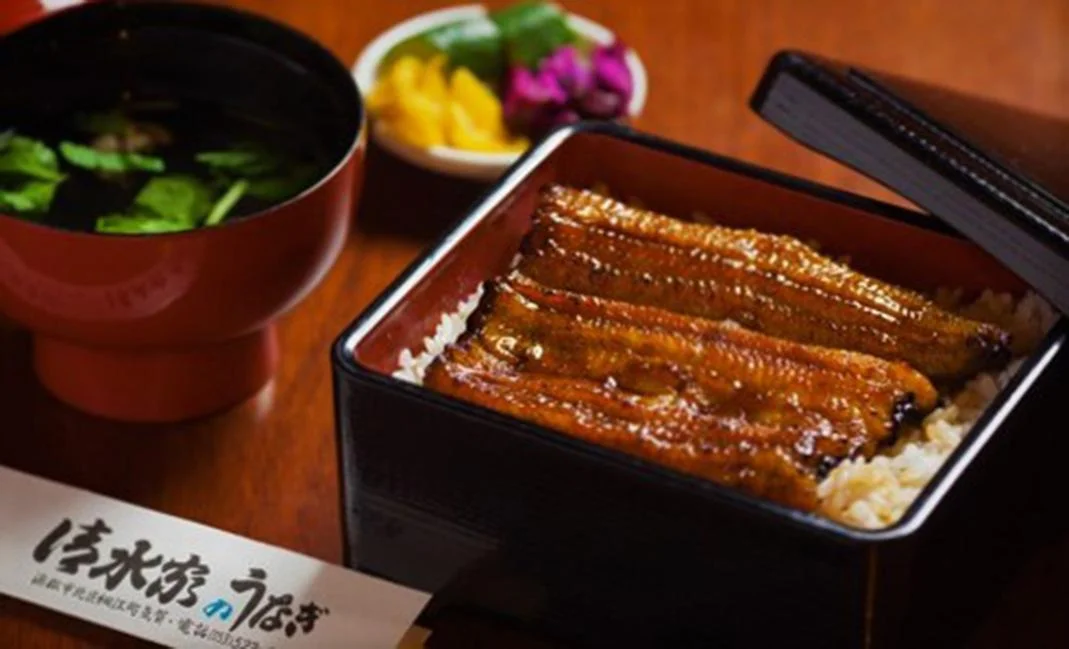Blessed with diverse natural features, including Mt. Fuji, the tallest mountain in Japan, and Suruga Bay, the deepest bay in Japan, Shizuoka Prefecture is often referred to as the “kingdom of food” that produces a variety of high-quality agricultural, forestry, and fishery products!
Eel (unagi) in particular is one of the most popular gourmet foods in Shizuoka Prefecture.
Lake Hamana, blessed with a mild climate and abundant groundwater from the Mikatahara Plateau, is known as the “birthplace of eel farming” with a history spanning more than 120 years since the first successful eel farming in Japan in 1900, and is the leading eel producing area in Shizuoka Prefecture.
Here, we will introduce a selection of our most recommended eel specialty restaurants in Hamamatsu City, where Lake Hamana is located! Please enjoy the traditional flavors passed down at each of the famous restaurants in Hamamatsu.
*Please note that the following restaurants are not introduced in order of popularity.
Charcoal Grilled Unagi Aoiya

This unagi restaurant attracts many customers from inside and outside of the prefecture. The eel is prepared in the Kansai style, as it is opened from the belly, split open on the spot, skewered on a metal skewer, and grilled over Binchotan charcoal. The eel is grilled over a strong charcoal fire until it turns golden brown, and the skin is crispy. The fat and sauce from the eel fall onto the charcoal fire, and the smoke that rises from the fire covers the eel, adding a savory fragrance. Prices vary depending on the size of the eel, but the unaju (rice topped with sliced grilled eel in a lacquer box) is the most popular item on the menu.
During the busy periods, such as on weekends, they may be sold out even during business hours, so we recommend arriving to the restaurant as early as possible.
For more information, click here.
5th-Generation Hamamatsu Unagi Cuisine Atsumi

Th restaurant is extremely particular about food safety, as all ingredients are domestically produced, and no chemical seasonings are used whatsoever.
Eels from Lake Hamana are prepared by bringing out the flavor in each of the ingredients. We hope you will try the variety of unagi dishes that are prepared with carefully selected ingredients and thorough attention to detail, including the “kabayaki” (where the eel is split down the back, gutted and boned, butterflied, cut into square fillets, skewered, and dipped in a sweet soy sauce-based marinade before being cooked on a grill or griddle) with their secret sauce, which has been used for over 100 years, “shirayaki,” (similar to kabayaki, except the eel is roasted without the sauce and seasoned only with salt), which allows you to enjoy the original flavor of the eel, and “koumiyaki,” (herb-grilled) which allows you to enjoy the harmony of the eel fat, rock salt, and pepper.
For more information, click here.
Unagi no Iguchi (*take-out and local shipping only)

Here at Unagi no Iguchi, domestic eels that have been swum in subterranean water from the Alps pumped up from 100 meters underground and have had their distinct eel smells removed are grilled using a unique hand-grilling method.
Since Unagi no Iguchi’s popular shirayaki eel does not come with sauce, everything from the way the eel is stored to the way it is handled and grilled requires a great deal of skill.
Since Iguchi Eel specializes in take-out and local shipping only, please heat up the eel in a microwave oven, etc. at home and enjoy with wasabi soy sauce or salt to enjoy an authentic restaurant taste.
For more information, click here.
Kanerin Unagi
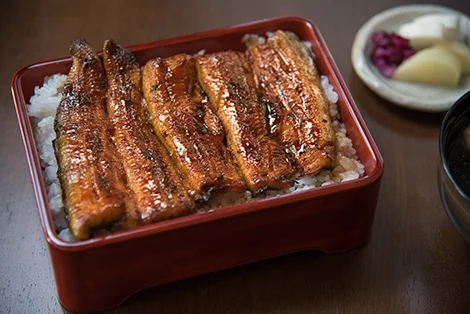
Founded more than 100 years ago as a river fish merchant, Kanerin Unagi quickly splits open the high-quality eels procured that season and grills them over Binchotan charcoal to make them fragrant on the outside and plump on the inside. The grilled eel is dipped in the sauce three times, which has been passed down since the restaurant’s establishment, to ensure the best flavor, color, and luster. The eel is then placed over hot rice cooked in a large pot to complete the unaju dish.
The “Chu” (medium-sized) unaju is prepared with one full eel. We also recommend the “Jou-Unaju”, which includes the luxury of another slice of eel.
For more information, click here.
Kawamasu
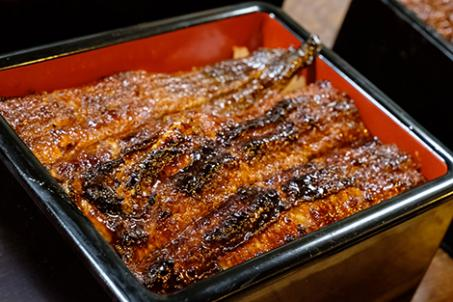
Kawamasu was opened in Hamamatsu by the restaurant’s first-generation owner, who was fascinated by eels from Lake Hamana. 80 years since then, the restaurant’s secret sauce has only been handed down to the second and third-generation owners. The fresh eel is carefully grilled over a charcoal fire, and the crunchy surface, fluffy inside, and crispy skin is topped with fresh Japanese sansho pepper to deliver an exquisite taste.
For more information, click here.
Unagi no Kantaro
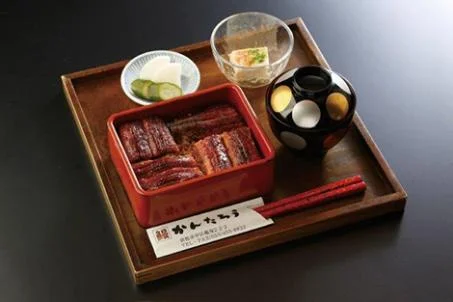
Since its establishment in 1977, Kantaro has been serving Kansai-style eel, which quite rare in Hamamatsu. Upon receiving an order, the chef selects fresh domestic eels, splits open their bellies, and grills them over Binchotan charcoal to give the eel a fragrant, crispy surface on the outside and soft plump texture on the inside.
You can watch the chef prepare and grill inside the restaurant, making it visually enjoyable as well.
For more information, click here.
Shimizuya
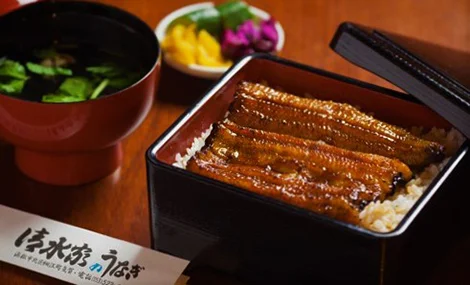
The Shimizuya pays careful attention to the individual characteristics of each eel and the degree to which the eel is grilled so that they can always offer the same taste that has been their specialty for three generations. The eel is cooked over a charcoal fire for both the shirayaki unagi and unagi dipped in sauce. When visiting the restaurant, please take the time to take in the rich aroma of the freshly charcoal-grilled eel.
For more information, click here.
Shinkado
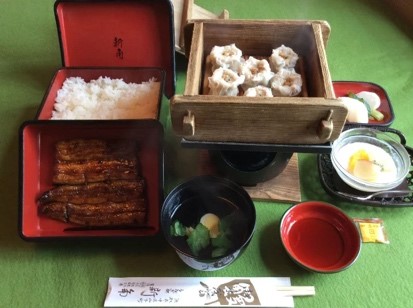
Opened in 1951, Shinkado has been in business for over 65 years, and the third-generation owner still maintains the secret sauce that has been passed down from generation to generation, serving eel dishes that have slowly soaked up the rich flavor of the sauce.
We recommend the hearty “unagi shumai” (eel dumpling). Be sure to try the juicy shumai packed with the flavor of fresh eel steamed right in front of you.
For more information, click here.
Nakagawaya

Nakagawaya is a restaurant with a history spanning over 145-years specializing in eel cuisine. The eels are left in the cool and clear subterranean water of the Tenryu River to slowly remove the distinct eel smell and make the meat firm and tender to preserve the traditional taste. The eels grilled using Nakagawaya’s unique grilling technique are crispy on the outside and fluffy on the inside. The popular “unagi tororo chazuke (う” (eel with grated yam topped over rice in a tea broth) offers the perfect harmony of eel, yam, and broth.
For more information, click here.
Sumiyaki Unagi Hajime

At Sumiyaki Unagi Hajime, the eels are split open at the belly after receiving each order and grilled over charcoal without steaming them. Because the eels are not steamed, the outer surface is crispy and fragrant, while the inside retains a soft and fluffy texture.
We recommend the “Unaju set,” which includes both kabayaki and shirayaki unagi. The restaurant’s modern Japanese interior and open kitchen create a welcoming atmosphere even for visitors eating alone.
For more information, click here.
Unagi Fujita Hamamatsu Ekimae

The key to the deliciousness of Unagi Fujita’s eel dishes lies in its secret sauce, which has a rich and tender flavor and has been made using the same recipe for more than 50 years. Only domestic eels from Lake Hamana are used, and each eel is steamed slowly and grilled over Binchotan charcoal. The restaurant is conveniently located just a minute walk from the south exit of Hamamatsu Station.
For more information, click here.
Hamanako Unagi Maruhama

Maruhama, which is directly managed by the Lake Hamana Fishery Cooperative, offers the highest quality eels sourced from Lake Hamana. The kabayaki unagi, which is cooked in the Kanto style, is slowly steamed and then grilled, which makes the meat tender and fatty, enabling you to enjoy authentic Lake Hamana eel flavor.
The restaurant is a 1-minute walk from Hamamatsu Station and can seat up to 45 people.
For more information, click here.
Unagi Yaotoku Honten

Established in 1919, Unagi Yaotoku has preserved its traditional taste by regularly replenishing their secret sauce, which is the key to its flavor.
The most recommended dish at Yaotoku, which attracts customers from all over the country, is the ohitsu unagi chazuke (eel over rice in a tea broth served in a round, wooden container). You can enjoy the mouthwatering taste of eel in two different ways, as unaju and as dashi chazuke (broth with green tea).
